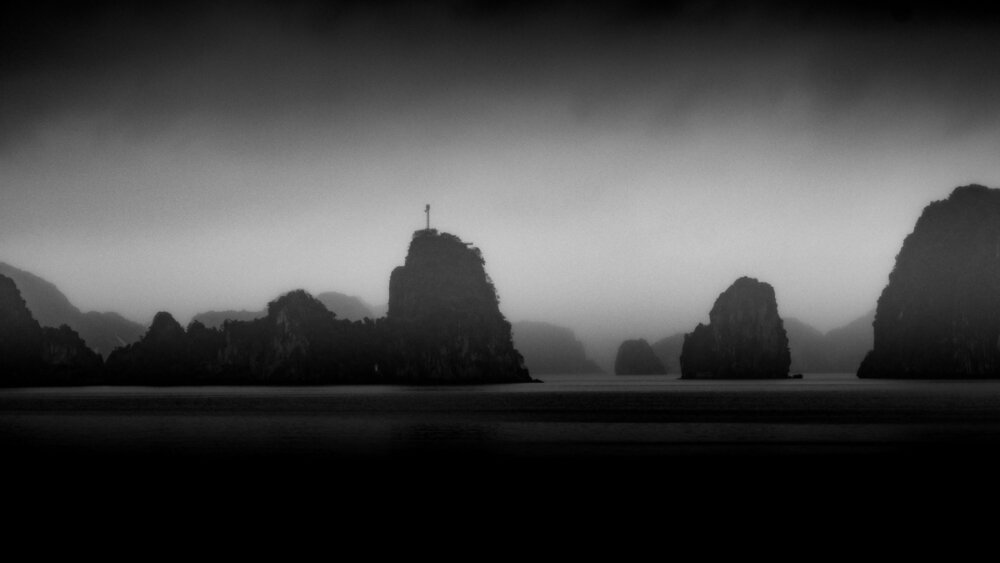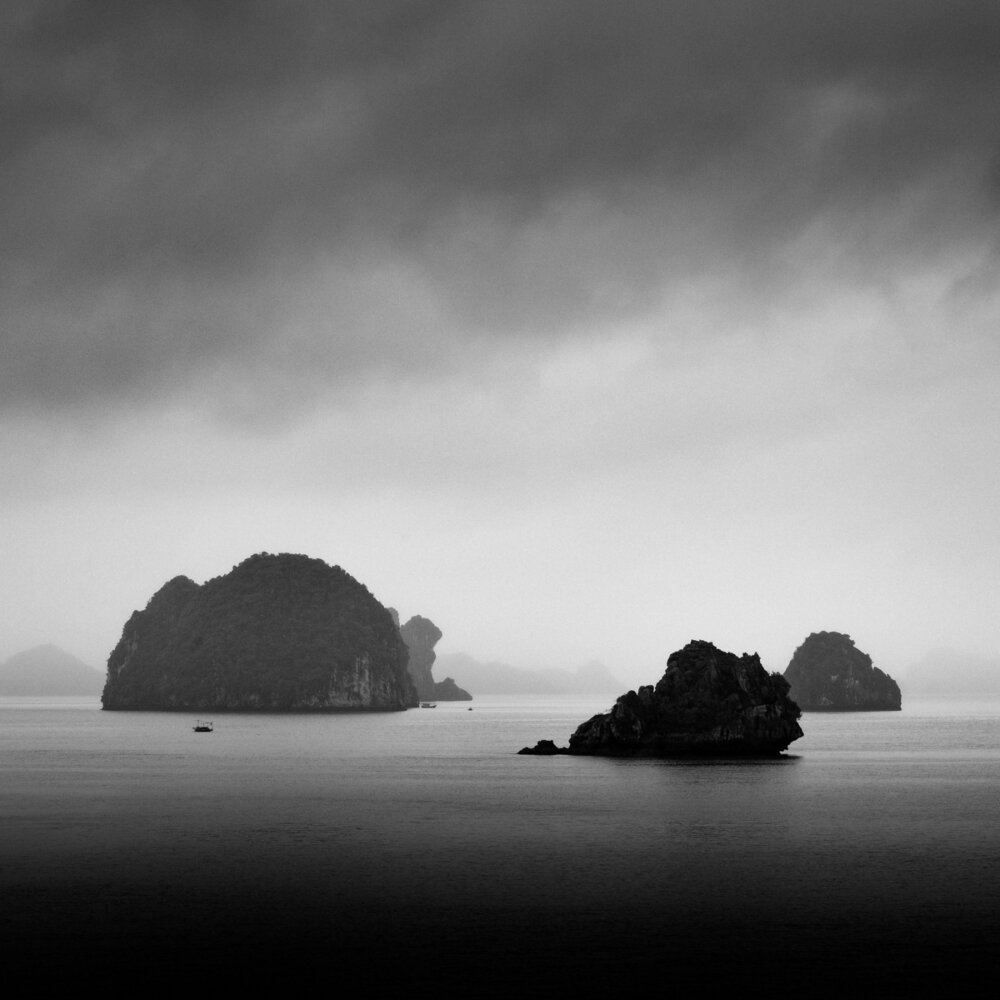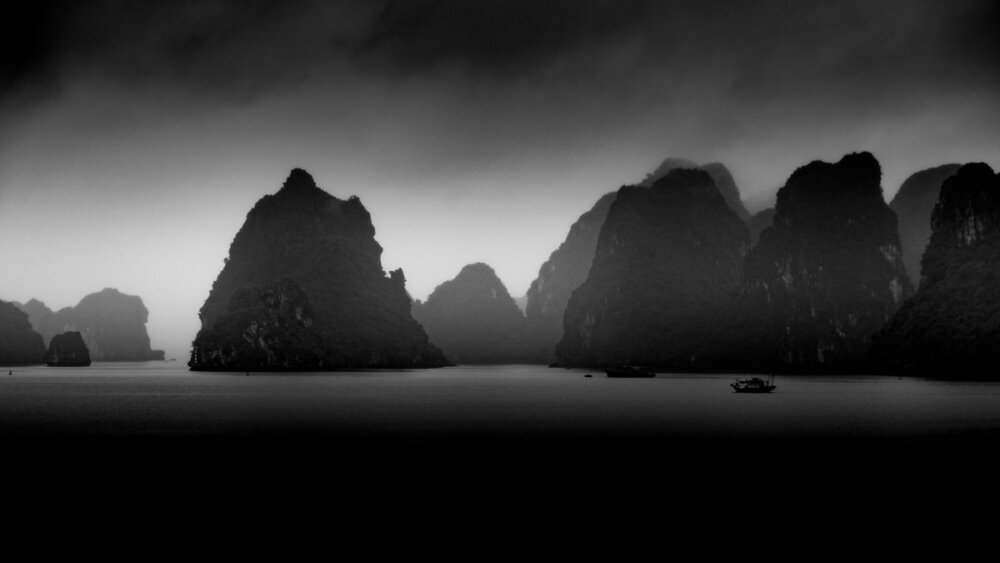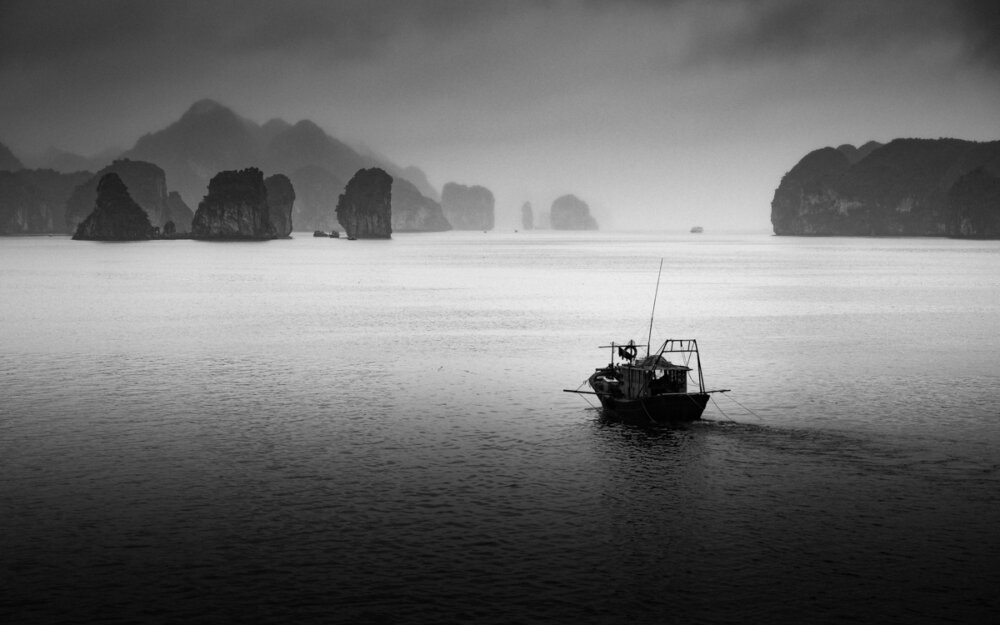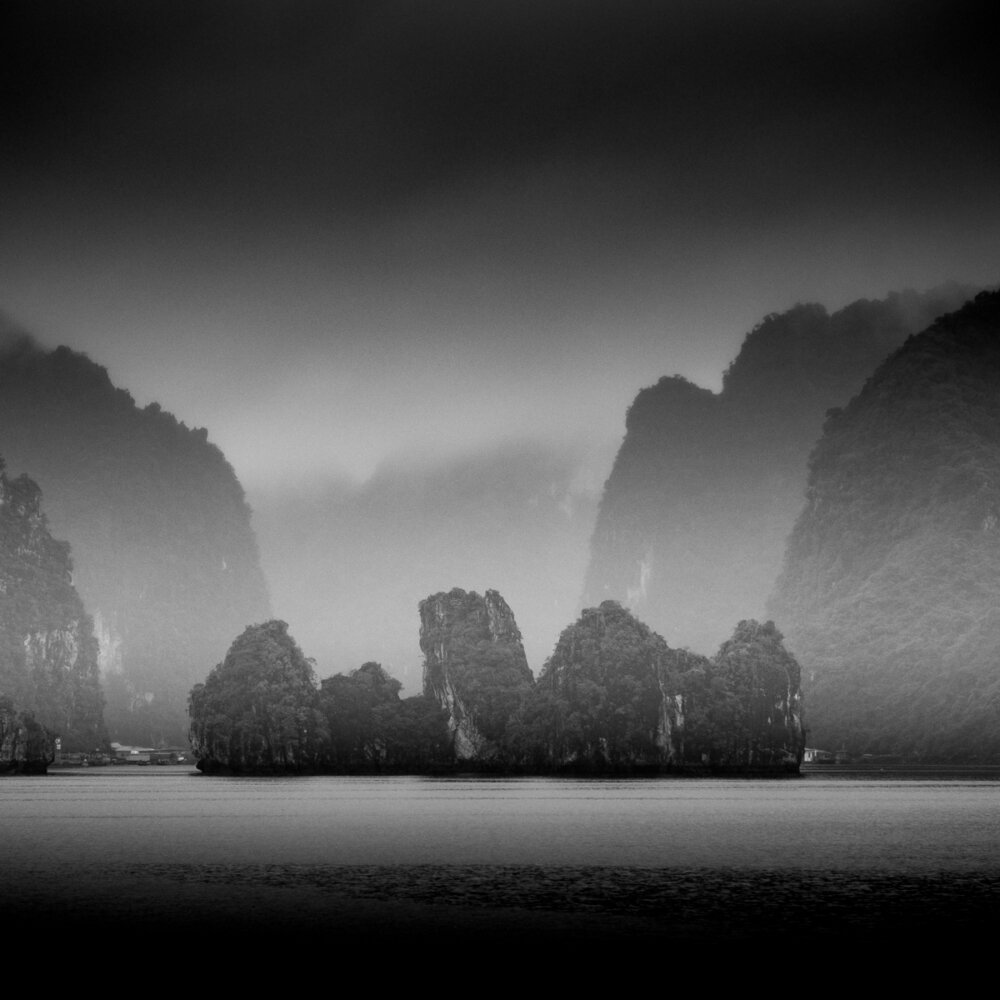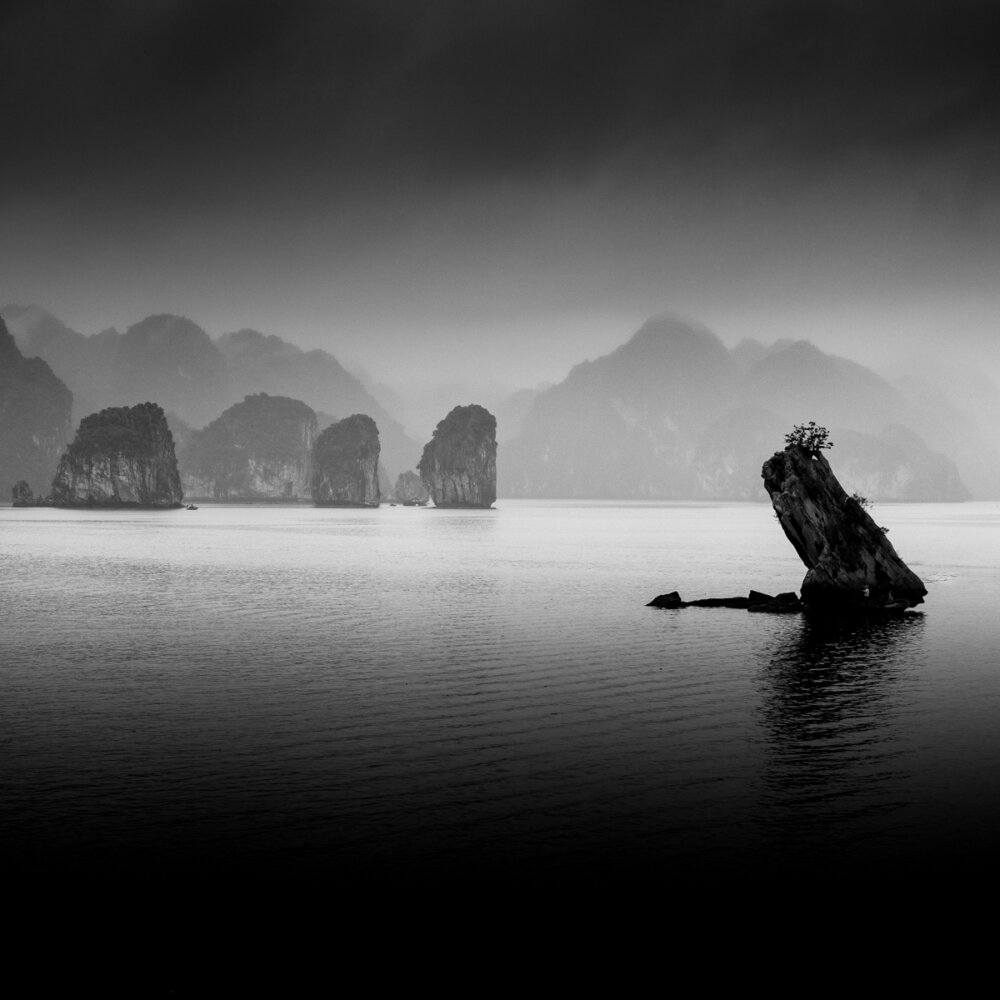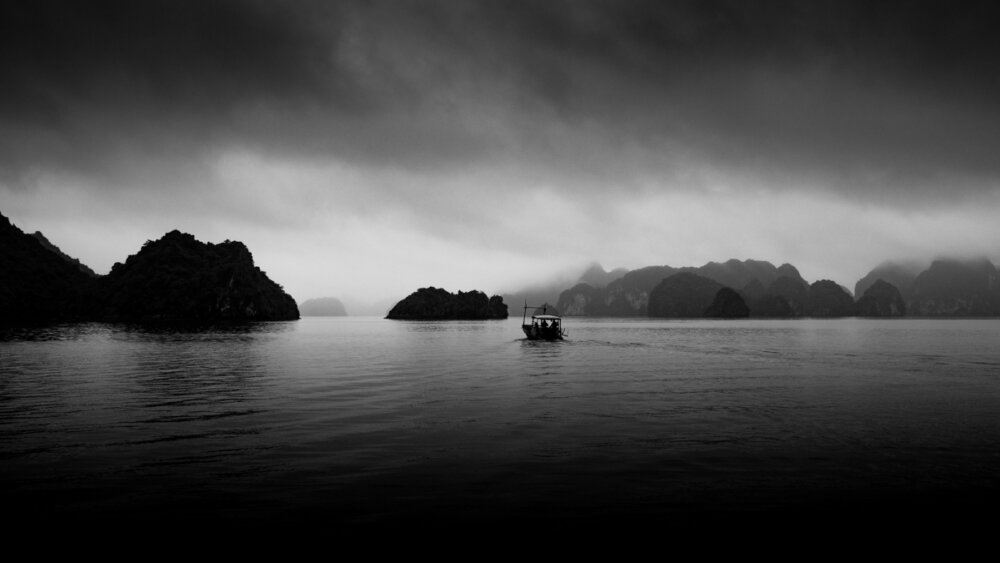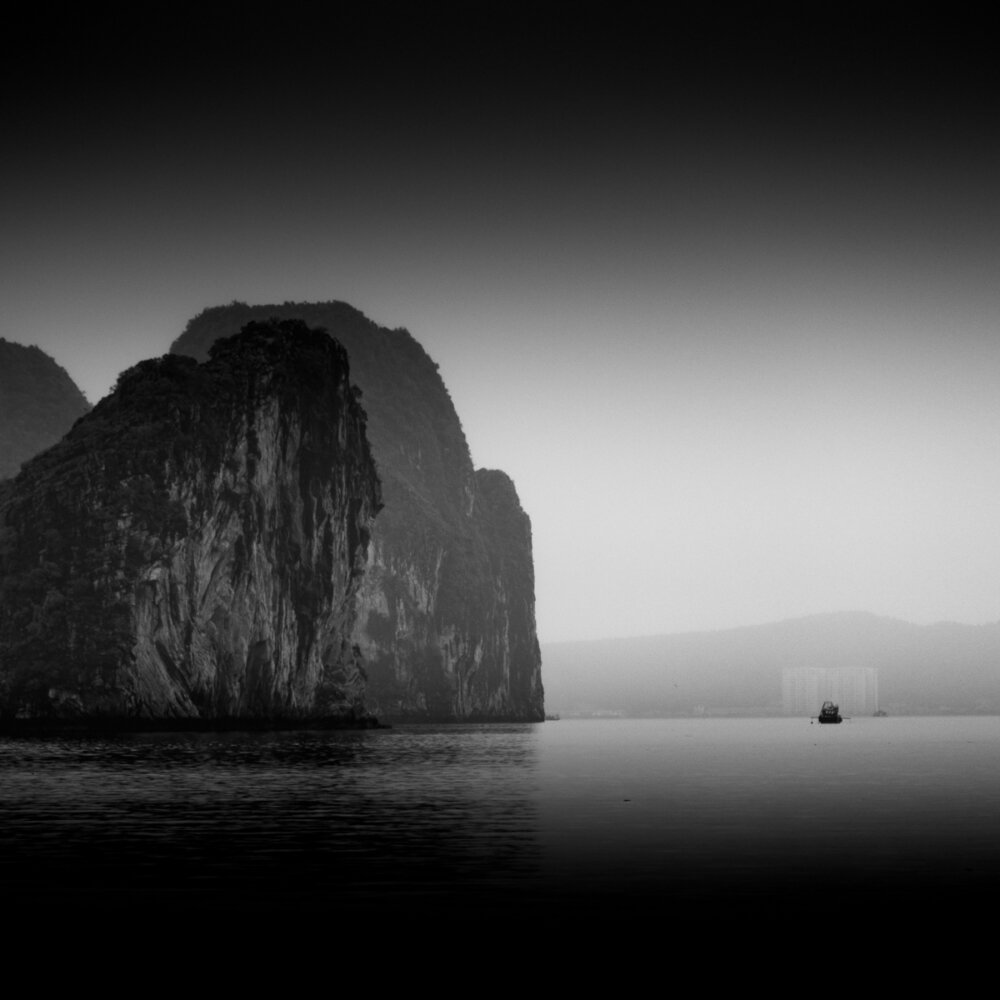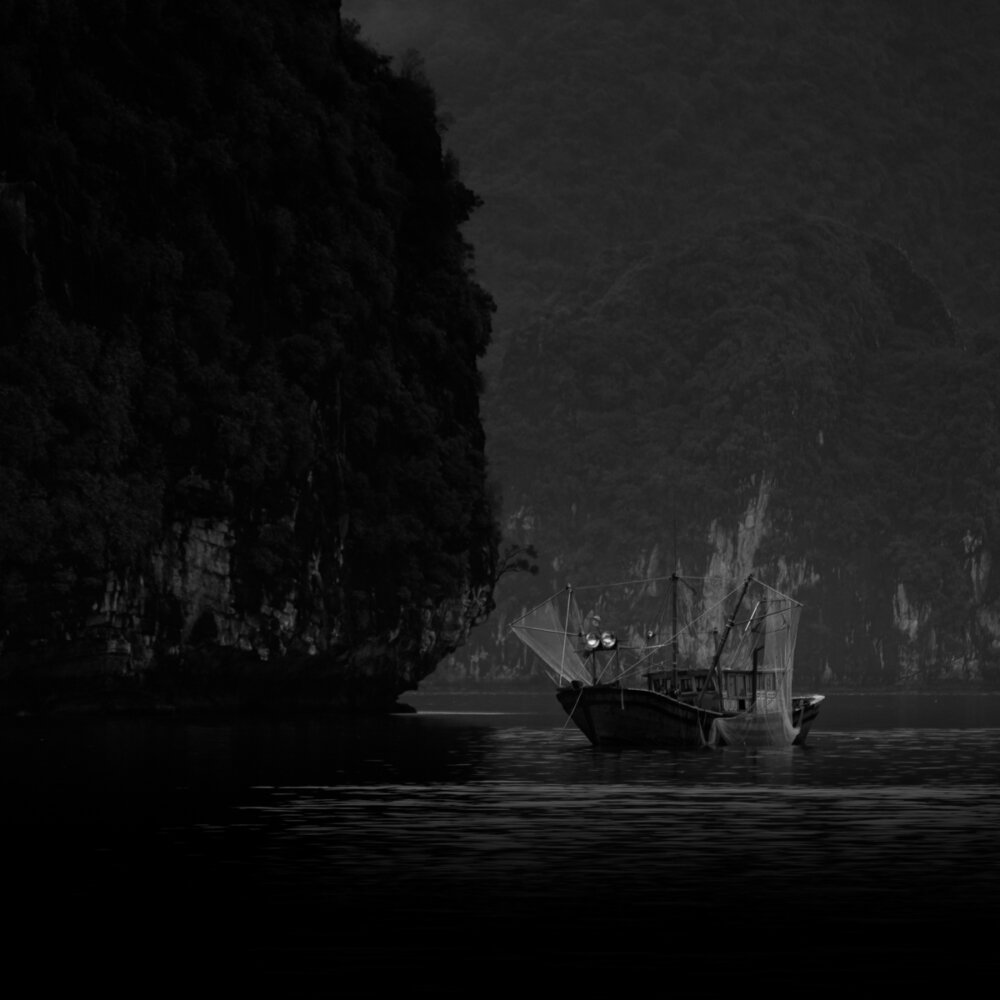Ha Long Bay: Greg Whitton’s Prose on Scale and Human Impact on Nature (Premium)
All images by Used with permission.
The world is full of absolutely breath-taking destinations that have long been the muse of many an artist. Vietnam’s Ha Long Bay is one such location that is often depicted as a pristine, untouched world marvel that shows Mother Nature’s majesty and resilience over the course of time. Ha Long Bay consists of a dense cluster of around 1600 limestone monolithic islands topped with thick jungle vegetation seemingly jutting out of the ocean. It’s no wonder why in 2000, the UNESCO World Heritage Committee named Ha Long Bay on a World Heritage Site. It’s also no surprise that photographers like flock to Vietnam in hopes of capturing the world marvel.
As Mr. Whitton made it onto his boat however he was in for a surprise. “I had imagined Ha Long Bay to be an idyllic destination, saturated in golden sun and with pristine seas. At least that is what the brochures seemed to depict. At least that is what the brochures seemed to depict. My experience was somewhat different,” Whitton said. “When we arrived to join our boat the weather was damp, grey and really quite cold. It was cold enough to need a jacket when outside. The sea was also strewn with litter, something that really brings home to you man’s impact on the environment.” It was Whitton’s initial shock to seeing man’s impact on Ha Long Bay that helped shaped his vision for his project and hopefully leaves a lasting impact on the viewer.
We caught up with Whitton to talk about his Ha Long Bay Project as well as his thoughts on how to create powerful, captivating landscapes in black and white.
When people typically think of shooting landscapes, the obvious components of that scene typically deal with color; when shooting in black and white what are some of the compositional elements that photographers should keep in mind? What are some of the challenges when you can’t rely on color to tell a story?
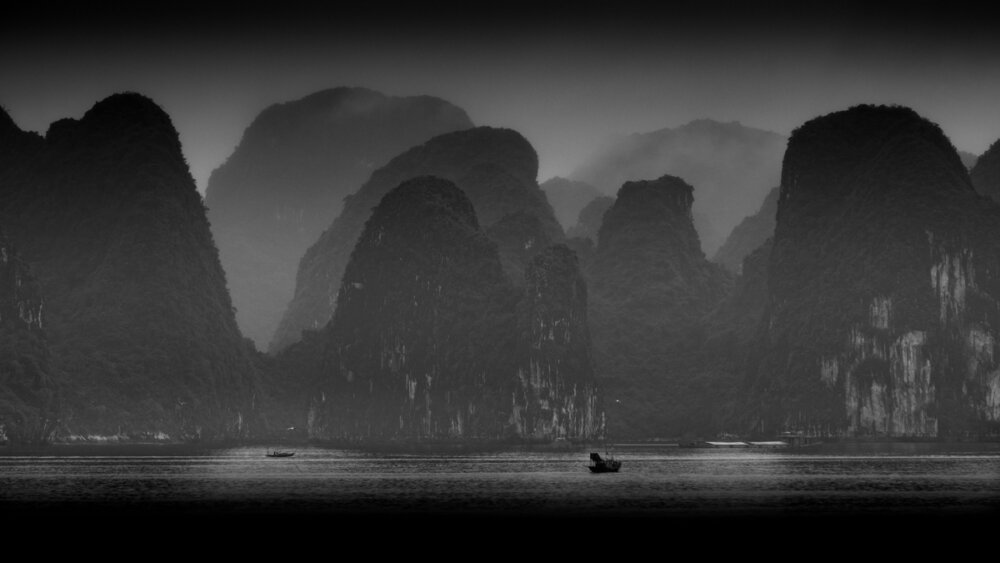
Let me say that I am predominantly a color photographer, I see the world in color and as such black and white is somewhat alien to me. Other photographers I know, who shoot mainly or exclusively in black and white, have said to me that they have done so for so long, or trained themselves, so that they only see in black and white. Whilst I understand that concept, it is not one I think I will so easily adapt to. Having said that, I can’t say that when I compose a photo I take too much notice of color, something I suppose, that I need to work on. Obviously shooting at certain times of the day and in certain weather conditions will have a great influence on the resultant image, but for me line and form are far more important. Color remains important but is almost secondary and walking hand in hand with color is light. I tell those on my workshops repeatedly that composition is king, line and form. If we happen to be photographing a scene that has great light, then great. If it has great light and color then even better…but ultimately, it doesn’t matter if the light doesn’t come and the color doesn’t stand out, as long as you have good composition the image might be compelling. The same philosophy applies to black and white although I suppose we can manipulate individual color channels in black and white post-process much more believable than we can when processing in color.
When you were at Ha Long Bay, did you immediately decide to shoot in black & white or did you come to this decision when processing the images? Would you have approached the edits differently had you decided on one over the other?
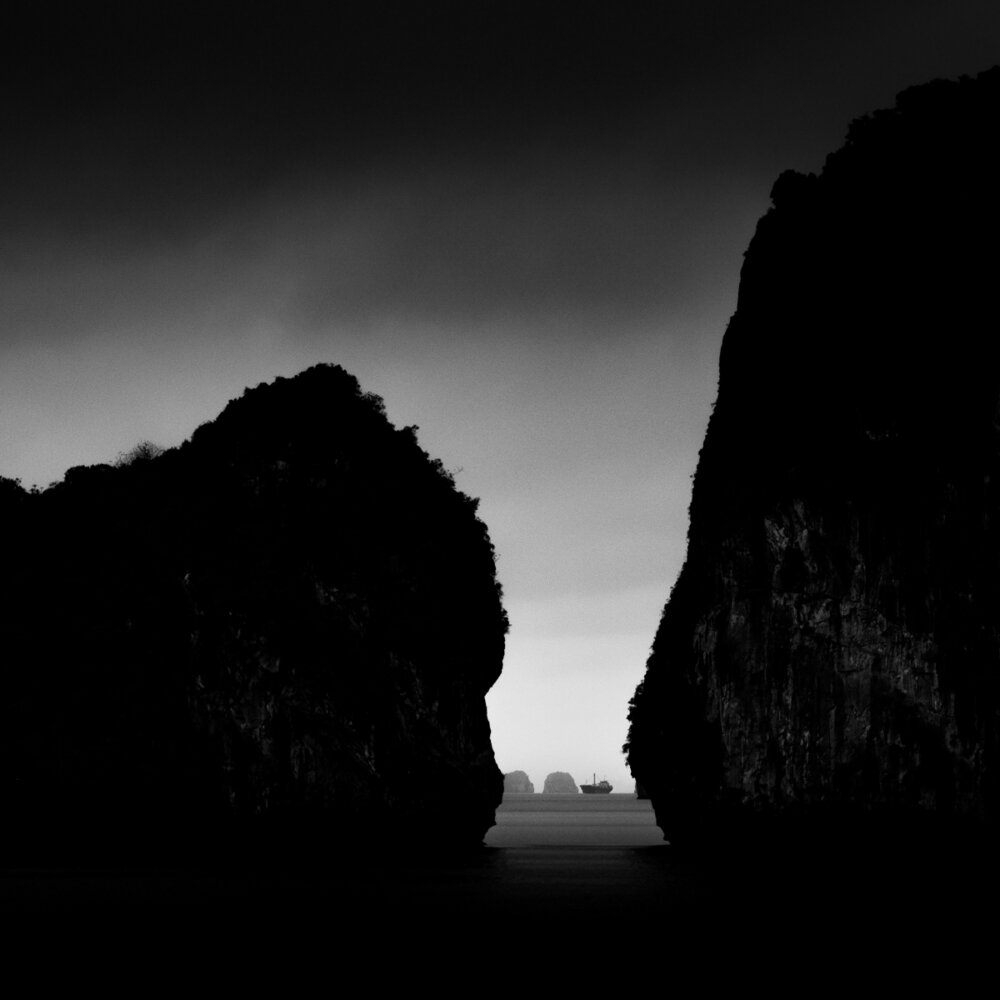
I had imagined Ha Long Bay to be an idyllic destination, saturated in golden sun and with pristine seas. At least that is what the brochures seemed to depict. My experience was somewhat different. When we arrived to join our boat the weather was damp, grey and really quite cold. It was cold enough to need a jacket when outside. The sea was also strewn with litter, something that really brings home to you man’s impact on the environment. There was virtually no color to the landscape anyway, so the obvious choice was to shoot for black and white. I wanted to produce a small project that depicted my experience of Ha Long Bay succinctly and I wanted quite a dark, graphic feel to it. The images needed to look dirty to reflect what I was seeing in the water and I felt a filmic/grainy look would suit. So that is what I set out to do before the boat had even left dock.
Your images have a calming, melancholic mood to them, what are some of the scene’s elements used that contribute to the overall feel of the final product.
Isolation in the image was important. I was on a moving boat and scenes were transient. There were lots of other vessels about, from small junks and fishing vessels, to row boats and large container ships and oil tankers. I wanted to ensure I isolated them from the landscape where possible, but ultimately I was at the mercy of the boat’s captain, I was just a passenger. Scale was also a huge factor too. The sky was also quite important. It was largely just a featureless grey blanket which would suit intentional over-graduation, but there were pockets of texture too. I was looking for those especially.
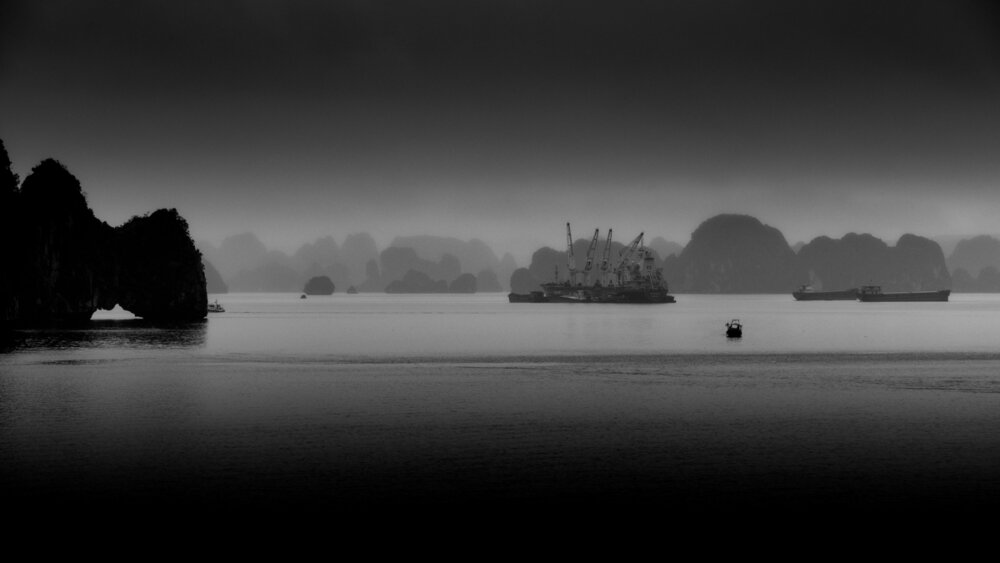
Many of the images in your portfolio seem to emphasize scale; is this a theme in your work?
Yes, as I mention above, scale is hugely important. My main subject matter and what I am most known for is mountainous landscapes. There needs to be a sense of scale in those in order to enhance the emotional response of the viewer. Whether that is a feeling a vertigo or not depends on the individual, but mountains being mountains, they are not small and yet they are being represented on a 15in screen or an A2 print. Scale is very important. I guess that need to emphasize scale finds its way into the rest of my portfolio too, and again here, in these Ha Long Bay images.
Getting back to the Ha Long Bay photographs, the archipelago appears to be stuck in time in a way with the odd large ship that passes by; was it intentional on your part to keep most signs of modern life out of your images?
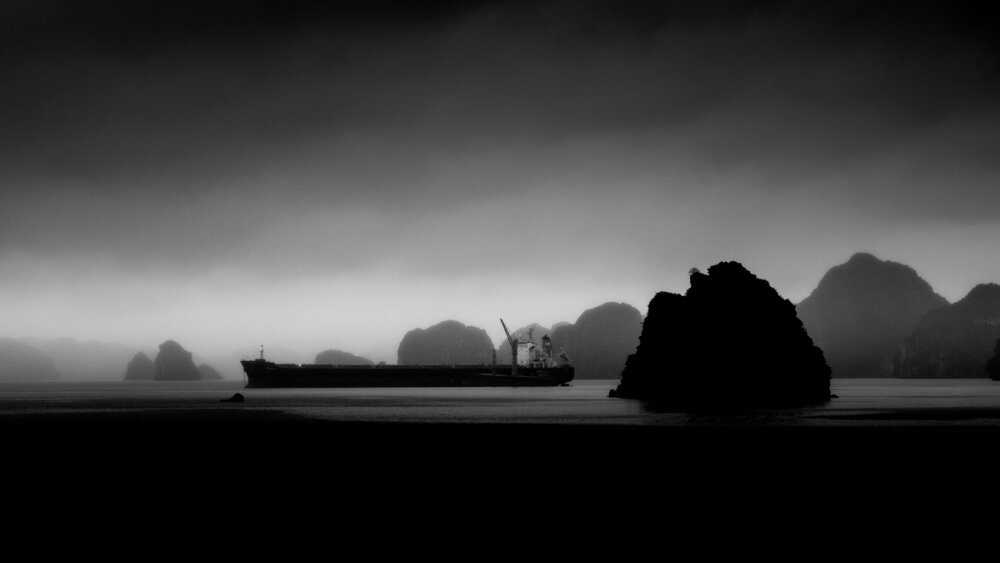
No, on the contrary, I wanted to show how modern life is gradually changing and ultimately destroying this incredible place. some of the images have no human element, whether at sea or on land. Others depict just a small fishing vessel or structure, and then there are those that show huge ships. The landscape/seascape is constantly evolving and as trade increases and tourism escalates, the impact on the environment is only going to increase too. The bay may be a UNESCO World Heritage site, but it’s hard not to notice the impact man is having on the environment there. Whether in time changing sea levels will drastically alter the place or not remains to be seen, but you can already see how the marine environment must be changing simply due to the amount of human litter or the by-products of industry that you pass when sailing.
What were some of the challenges faced while shooting this series? Was gear or environment a factor?
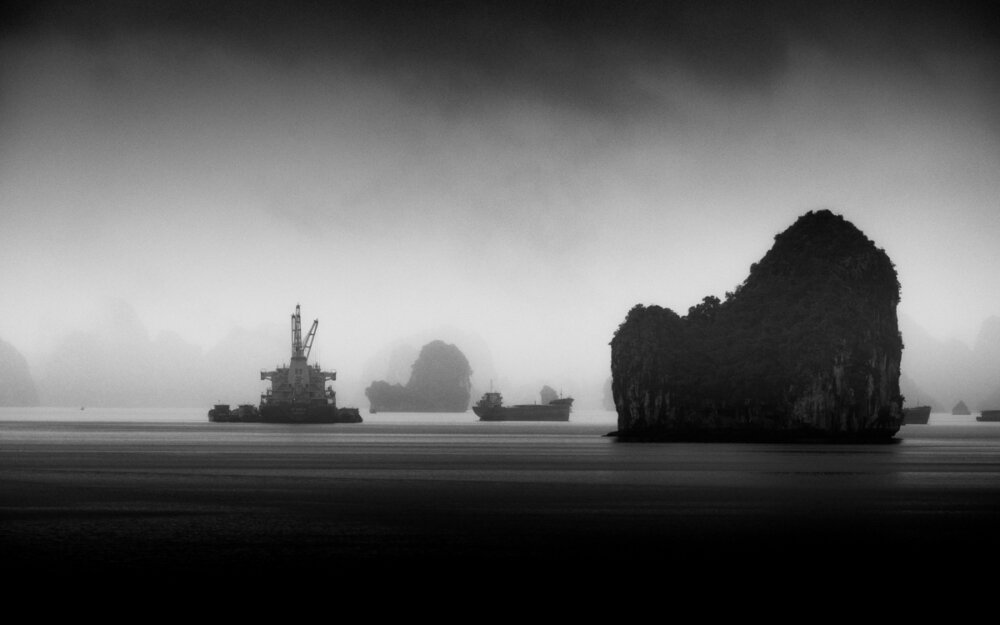
Oh yes, it was incredibly difficult really given the small travel kit I was carrying. Firstly, we were on a boat for almost the entire time which makes the use of a tripod completely redundant; and secondly, the light levels were really low due to the thick blanket of grey cloud. I was having to shoot (image stabilized) at around f/5.6 and upwards of ISO 800 in the middle of the day in order to get a sharp image. It was just a really dark and dank atmosphere to be shooting in and one which I hope has translated well into the images produced.
Mr. Whitton’s Ha Long Bay Project asks viewers to look at one of the world’s wonders through the eyes of its rich history. It’s a reminder of just what kind of impact our actions can have on the world around us and more importantly the importance of preserving it. Greg Whitton is an award-winning landscape, travel, and adventure photographer based out of the United Kingdom. He’s been awarded “Light of the Land” category winner as well as overall “Outdoor Photographer of the Year 2014” in 2015. In 2016 Mr. Whitton’s been named winner of the “Live the Adventure” category also in the Outdoor Photographer of the Year competition. Mr. Whitton holds numerous photowalks, photography tours, and workshops emphasizing that his clients enjoy and appreciate their time outdoors while improving their photographic skill. You can find more information about Mr. Whitton on his .
